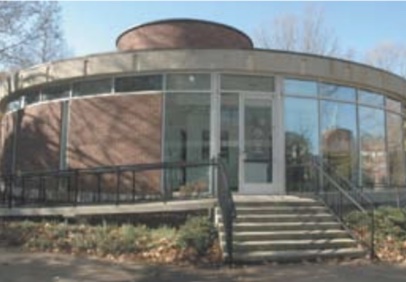 Vanderbilt University's journey in high-performance computing began in 1962 with the establishment of a mainframe computer in a distinctive round building at the Stevenson Center, featuring glass walls to display this cutting-edge technology. This building, later transformed into the Vanderbilt Biomolecular Nuclear Magnetic Resonance Center in 2000, was part of an effort led by Judson Newbern, Associate Vice Chancellor of Campus Planning and Construction, to preserve its unique architectural value.
Vanderbilt University's journey in high-performance computing began in 1962 with the establishment of a mainframe computer in a distinctive round building at the Stevenson Center, featuring glass walls to display this cutting-edge technology. This building, later transformed into the Vanderbilt Biomolecular Nuclear Magnetic Resonance Center in 2000, was part of an effort led by Judson Newbern, Associate Vice Chancellor of Campus Planning and Construction, to preserve its unique architectural value.
The foundation for the Advanced Computing Center for Research and Education (ACCRE) was laid with the VUPAC cluster, created in 1994 by Vanderbilt physicists.  This initiative expanded into the VAnderbilt MultiProcessor Integrated Research Engine (VAMPIRE) in 2001, a 55-node Linux cluster.
This initiative expanded into the VAnderbilt MultiProcessor Integrated Research Engine (VAMPIRE) in 2001, a 55-node Linux cluster.  VAMPIRE was a collaborative effort involving Paul Sheldon from Physics and Astronomy, Jason Moore from Human Genetics, and computational theoretical physicist Alan Tackett.
VAMPIRE was a collaborative effort involving Paul Sheldon from Physics and Astronomy, Jason Moore from Human Genetics, and computational theoretical physicist Alan Tackett.
Following the success of VAMPIRE, a larger 120-node Linux cluster was established in 2003, with substantial contributions from the School of Engineering. This development paved the way for the launching ACCRE, which was formally established with an $8.3 million grant from the Academic Venture Capital Fund of Vanderbilt University. This transformative funding enabled ACCRE to become a comprehensive resource for the university, supporting not just computing but also data storage and visualization.
 ACCRE's growth continued under the leadership of individuals like Dave Piston, who played a pivotal role in securing NIH grants for the expansion of the compute cluster. To meet the needs of Vanderbilt researchers not met by off-the-shelf storage solutions, ACCRE staff began the process of developing in-house a new distributed storage system.
ACCRE's growth continued under the leadership of individuals like Dave Piston, who played a pivotal role in securing NIH grants for the expansion of the compute cluster. To meet the needs of Vanderbilt researchers not met by off-the-shelf storage solutions, ACCRE staff began the process of developing in-house a new distributed storage system.  Called LStore, the new system provides a flexible logistical storage framework for distributed, scalable, and secure access to data for a wide spectrum of users. Vanderbilt research groups began using this storage system as early beta testers in January 2007 and the system began being used in 2010 for a major Physics collaboration.
Called LStore, the new system provides a flexible logistical storage framework for distributed, scalable, and secure access to data for a wide spectrum of users. Vanderbilt research groups began using this storage system as early beta testers in January 2007 and the system began being used in 2010 for a major Physics collaboration.
The cluster filesystem was also substantially increased starting in 2010 to meet the needs of researchers for disk space connected to the cluster and currently over 800 TB are in use by researchers. The size of the filesystem can be adjusted to meet researcher demand.
Since 2011 Vanderbilt has served as a Tier 2 CMS institution. CMS (Compact Muon Solenoid) is one of two primary detectors at the Large Hadron Collider located in Switzerland. Vanderbilt currently hosts 4 petabytes of storage (i.e., 4,000 terabytes) in support of this project alone, all of which is stored in LStore along with over 300 terabytes of video data from the Vanderbilt Television News Archive (TVNA) located in the Jean and Alexander Heard Library.
As of 2023, ACCRE’s cluster resource has grown to be comprised of 16,000+ cores across 700+ nodes. Serving over 3,000 researchers across 9 schools and colleges on Vanderbilt campus. New hardware continues to be added to the cluster based on contributions from researchers as required to meet their computing needs. ACCRE offers a broad range of research support support services championed by 22 staff.